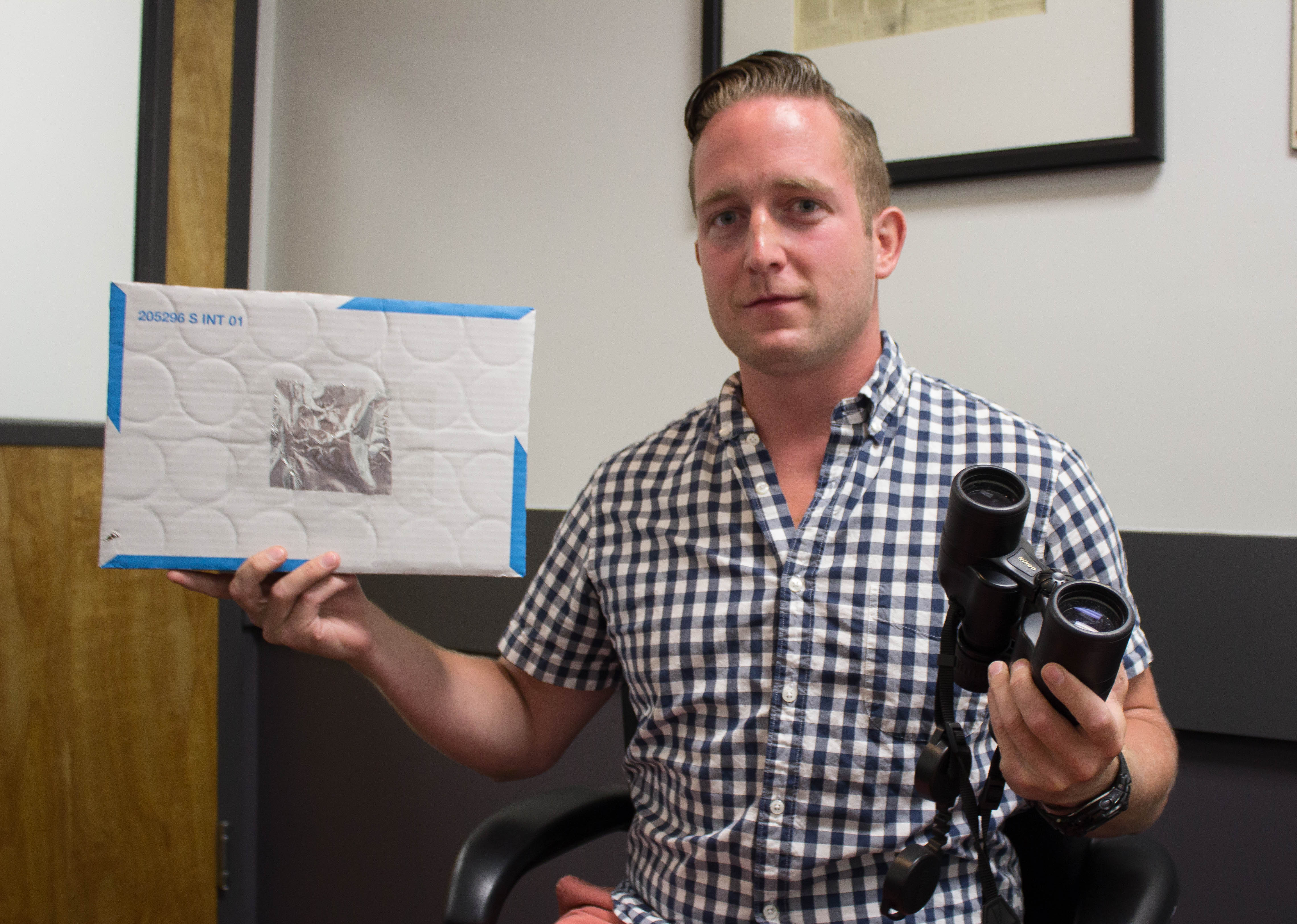If you haven’t purchased eclipse viewing glasses yet and want to safely look at today’s solar eclipse, Lynn English High School Science teacher, Erik Hellmer, has household tricks.
The methods involve using a pair of binoculars, and items you might have around: like a box of tinfoil, cardboard, and a thumbtack.
Both methods will project the eclipse onto a safe surface that won’t harm your eyes like you would staring directly at the sun.
To view the solar eclipse using binoculars, you must prop them up with either a tripod or something more practical, like a stack of books, Hellmer said.
Next, take a piece of cardboard and trace the lenses of the binoculars. After cutting out the small holes, cover the lens with the cutout piece of cardboard so the lenses are poking out. It is important to cover any holes between the binocular lens and cardboard with tape in order to project the eclipse.
Without looking directly at the sky, direct the lenses at the eclipse. Place a sheet of paper on the ground at a distance which is below the eyepiece — this is where the eclipse will be projected.
To make a homemade eclipse projector, you need the following materials: the lid of a box, scissors, box cutter, tape, tin foil, thumbtack and piece of paper.
First, cut out a small square with scissors or a box cutter into the center of your box that is about 2 x 2 inches.
Next, cut out a piece of tin foil that is about 3 x 3 inches and tape it on the box so it covers the hole.
With your thumbtack, make a small puncture into the center of the tin foil.
Similar to the binoculars method, you will prop your cardboard box projector so that the small tinfoil hole is directed at the sun. The solar eclipse will be projected onto sheet of paper you place below.
Hellmer said that demonstrating how people can make these eclipse viewing tools at home will hopefully create in interest in the world of science and space.
The University of Massachusetts Amherst graduate also warned people not to look directly at the sun when using these devices and in general during the eclipse.
The partial phases will start at about 1:30 p.m. in Boston, with its peak viewing time (where most of the sun will be covered) at 2:46 p.m. It should be over by 4 p.m.

